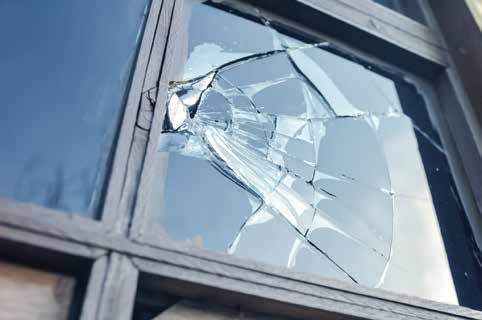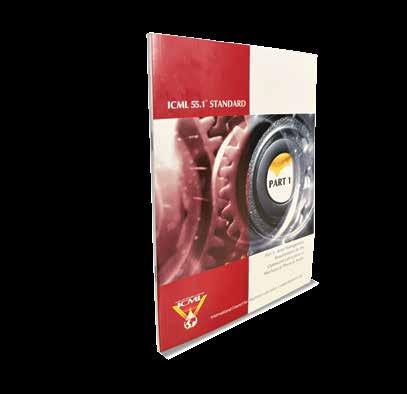
5 minute read
Make Touchstones of Lubrication Excellence Shine

Almost subconsciously, our senses gather information on our surroundings. They recognize subtleties, discern unique features and examine characteristic details. This could be a glass of Spanish red, a seat on a flight to London or a test drive of a Tesla Roadster. Using our senses, we register facts and find nuances that collectively help us arrive at opinions and conclusions on quality, functionality, attractiveness, comfort and value. Perception is reality.
Advertisement
Computers with deep-learning algorithms fed by innumerable sensors are used to collect and process data. Notwithstanding, they are no match for our senses and our brain. Artificial intelligence is better at augmenting our intelligence but not replacing the cognitive ability of our brain flanked by human senses. If you think I’m wrong, try having a conversation about your favorite sports team with Alexa or Siri. Or ask a simple question like, “Can a fish be taught to ride a bicycle?”
This high level of human perceptiveness is applied to our work environment and maintenance culture. Let me give you an example. In criminology, there is a concept known as the broken windows theory. It states that “visible signs of crime, antisocial behavior and civil disorder, such as broken windows in abandoned buildings create an urban environment that fosters further crime and disorder, including serious crimes.” In other words, the perception of a neighborhood in decay bolsters criminal behavior.
Another example: let’s take the workshop that’s attached to my garage at our family home. It’s a microcosm of the broken windows theory. If I keep my workshop tidy and everything organized, other family members who use it will do the same. However, the moment I leave behind a mess from a recent project, these same people will soon add to the mess. They will certainly not clean up my mess, nor will they clean up after themselves. Tools and scrap will be scattered about.
Of course, what I’m referring to is innate to our human psyche. You don’t have to be an industrial psychologist to grasp the veracity of my message. Perhaps you have plenty of your own examples to corroborate. But here’s the deal: in a plant environment, the touchstones of excellence go far beyond a clean and orderly state. Tidiness is important, but it is not enough. It is preposterous to think that anything close to excellence in maintenance, reliability and lubrication is achievable where conspicuous or even subtle symbols of “broken windows” exist. This subject is so important that I thought it worthy of my column today.
Broken Windows in the Context of Reliability
“Broken windows” is the precursor to a broken culture that leads to waste and neglect. A broken culture is the precursor to broken machines and exacts its toll on an organization — financially and culturally. It’s the cycle of repair and despair. It’s been said that “reliability is 80% culture and 20% everything else.”
Many maintenance organizations attempt to fix the problem by making superficial changes. They might come up with a slogan, pass out t-shirts, invest in a sexy instrument or send somebody to a conference. You can put lipstick on a pig, but it’s still a pig. These aren’t real fixes by themselves. They are token or imaginary fixes, and they spawn distrust.
Real fixes require critical mass. You have to cross the chasm, fully and completely; no pretending, no lipstick. Folks, you can’t put a Band-Aid on cancer. Maintenance teams are wise to the difference. They will make you pay.
So, what are the symbols of broken windows in the context of maintenance, reliability and lubrication? The first thing that comes to mind is pretending to save money by buying cheap or simply not investing. I don’t mean going wildly overboard. It’s always about optimizing, not maximizing.
Publisher Udey Dhir udeydhir@tribologysolutions.com
Creative Director Sumita Maniktala smassociates@gmail.com
Advertisement Sales (US/Canada) Brett O'Kelley - bokelley@noria.com
Advertisement Sales (India/all other countries)
Kaustav Das kaustuvdas@machinerylubricationindia.com
CORRESPONDENCE
You may address articles, case studies, special requests and other correspondence to our
Operation office :
Editor 213, Ashiana Centre, Adityapur, Jamshedpur-831013, India email : editor@machinerylubricationindia.com
Tel: +91-657-2383238
Tel:(USA): +1-918-960-9738
Marketing Office
Rider House, 136, Sector 44, Gurgaon-122003, Haryana National Capital Region, India
Machinery Lubrication India Volume 64 - Issue 3, May-June 2023 is published bi-monthly by VAS Tribology Solutions Pvt. Ltd. Operation Office:213, Ashiana Centre, Adityapur, Jamshedpur-831013, India.
SUBSCRIBER SERVICES: The publisher reserves the right to accept or reject any subscription. Send subscription orders, change of address and all related correspondence to: VAS Tribology Solutions Pvt. Ltd. Operation Office:213, Ashiana Centre, Adityapur, Jamshedpur-831013, India.
Copyright © 2013 VAS Tribology Solutions Pvt. Ltd., Machinery Lubrication India and associated logos are trademark of VAS Tribology Solutions Pvt. Ltd. All rights reserved. Reproduction in whole or in any part in any form or medium without express written permission of VAS Tribology Solutions Pvt. Ltd. is prohibited. VAS Tribology Solutions Pvt. Ltd. reserves the right with respect to submission, to revise, republish and unauthorize its readers to use the tips and articles submitted for personal and commercial use. The opinions of those interviewed and those who write articles for this magazine are not necessarily shared or endorsed by VAS Tribology Solutions Pvt. Ltd.
CONTENT NOTICE: The recommendation and information provided in Machinery Lubrication India and its related properties do not purport to address all of the safety concern that may exist. It is the responsibility of the users to follow appropriate safety and health practices. Further, Machinery Lubrication India does not make any representations of warranties, express or implied, regarding the accuracy, completeness or suitability, of the information or recommendations provided herewith. Machinery Lubrication India shall not be liable for any injuries, loss of profits, business, goodwill, data, interruption of business, nor for incidental or consequential merchantability or fitness of purpose, or damages related to the use of information or recommendations provided.
Look around you; what do you see? How do your machines appear? Are they ready for the antique roadshow? Are they cobbled together with baling wire and duct tape? Next, look at your lube room, tools, transfer containers, instruments and accessories. Are they dated, broken and collecting dust? How about the lubricants? Are they tidy, tightly sealed and fresh, or have you applied the FISH principle (First In, Still Here)?
Are planning and scheduling proactive or reactive? Nothing breeds a dysfunctional culture more than Whack-A-Mole maintenance. Does your team still utilize paper-and-pencil methods, or are modern dynamic routing apps on mobile devices in use for inspection and PMs? The list goes on.
A Picture is Worth a Thousand Words
The images that follow are examples of touchstones that drive excellence. They are an ensemble of things done right. Good choices induce good outcomes. There is not just a single “right way,” so consider your options too. But remember, optimizing rarely involves doing nothing at all. Make real, lasting change, but keep improving. Be a Kaizen-driven organization and take action.
Finally, if you have ideas you want to share, please forward them to me at jfitch@noria.com. ML
About the Author
Jim Fitch has a wealth of “in the trenches” experience in lubrication, oil analysis, tribology and machinery failure investigations. Over the past two decades, he has presented hundreds of courses on these subjects. Jim has also published more than 200 technical articles, papers and publications. He serves as a U.S. delegate to the ISO tribology and oil analysis working group. Since 2002, he has been the director and a board member of the International Council for Machinery Lubrication. He is the CEO and a co-founder of Noria Corporation. Contact Jim at jfitch@noria.com.
3
1
Broken Windows
CYCLE OF REPAIR & DISPAIR (CRD)

Broken Machines
2
Broken Culture
In lubrication, excellence can be clearly defined. It shouldn’t be ambiguous. Contact the ICML for their recently published ICML 55.1 standard. Aligned to this is Noria’s Ascend™ Chart, which tracks the progress from the current state of lubrication to the optimum reference state (excellence).









